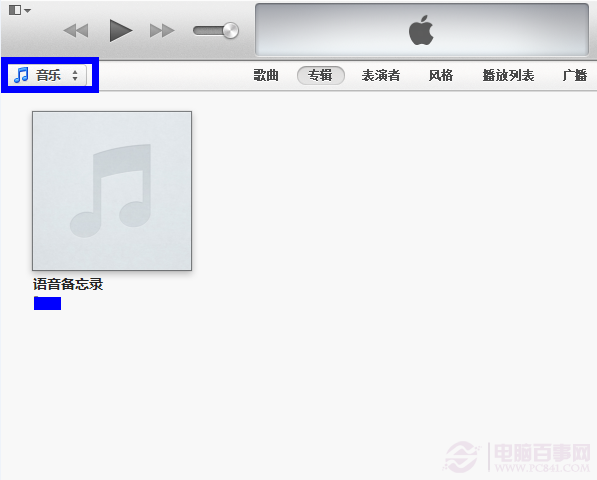iOS 多線程GCD的基本使用
編輯:IOS技巧綜合
《iOS多線程簡介》中提到:GCD中有2個核心概念:1、任務(執行什麼操作)2、隊列(用來存放任務)
那麼多線程GCD的基本使用有哪些呢?
可以分以下多種情況:
1、異步函數 + 並發隊列
/**
* 異步函數 + 並發隊列:可以同時開啟多條線程
*/
- (void)asyncConcurrent
{
// 1.創建一個並發隊列
// dispatch_queue_create(const char *label, dispatch_queue_attr_t attr);
// label : 相當於隊列的名字
// dispatch_queue_t queue = dispatch_queue_create("com.kyle.queue", DISPATCH_QUEUE_CONCURRENT);
// 1.獲得全局的並發隊列
dispatch_queue_t queue = dispatch_get_global_queue(DISPATCH_QUEUE_PRIORITY_DEFAULT, 0);
// 2.將任務加入隊列
dispatch_async(queue, ^{
for (NSInteger i = 0; i<3; i++) {
NSLog(@"this is first %@",[NSThread currentThread]);
}
});
dispatch_async(queue, ^{
for (NSInteger i = 0; i<3; i++) {
NSLog(@"this is second %@",[NSThread currentThread]);
}
});
dispatch_async(queue, ^{
for (NSInteger i = 0; i<3; i++) {
NSLog(@"this is third %@",[NSThread currentThread]);
}
});
}

2、同步函數 + 並發隊列
/**
* 同步函數 + 並發隊列:不會開啟新的線程
*/
- (void)syncConcurrent
{
// 1.獲得全局的並發隊列
dispatch_queue_t queue = dispatch_get_global_queue(DISPATCH_QUEUE_PRIORITY_DEFAULT, 0);
// 2.將任務加入隊列
dispatch_sync(queue, ^{
NSLog(@"this is first %@",[NSThread currentThread]);
});
dispatch_sync(queue, ^{
NSLog(@"this is second %@",[NSThread currentThread]);
});
dispatch_sync(queue, ^{
NSLog(@"this is third %@",[NSThread currentThread]);
});
}

3、異步函數 + 串行隊列
/**
* 異步函數 + 串行隊列:會開啟新的線程,但是任務是串行的,執行完一個任務,再執行下一個任務
*/
- (void)asyncSerial
{
// 1.創建串行隊列
dispatch_queue_t queue = dispatch_queue_create("com.kyle.queue", DISPATCH_QUEUE_SERIAL);
// dispatch_queue_t queue = dispatch_queue_create("com.kyle.queue", NULL);
// 2.將任務加入隊列
dispatch_async(queue, ^{
NSLog(@"this is first %@",[NSThread currentThread]);
});
dispatch_async(queue, ^{
NSLog(@"this is second %@",[NSThread currentThread]);
});
dispatch_async(queue, ^{
NSLog(@"this is third %@",[NSThread currentThread]);
});
}

4、同步函數 + 串行隊列
/**
* 同步函數 + 串行隊列:不會開啟新的線程,在當前線程執行任務。任務是串行的,執行完一個任務,再執行下一個任務
*/
- (void)syncSerial
{
// 1.創建串行隊列
dispatch_queue_t queue = dispatch_queue_create("com.kyle.queue", DISPATCH_QUEUE_SERIAL);
// 2.將任務加入隊列
dispatch_sync(queue, ^{
NSLog(@"this is first %@",[NSThread currentThread]);
});
dispatch_sync(queue, ^{
NSLog(@"this is second %@",[NSThread currentThread]);
});
dispatch_sync(queue, ^{
NSLog(@"this is third %@",[NSThread currentThread]);
});
}

5、異步函數 + 主隊列
// * 異步函數 + 主隊列:只在主線程中執行任務
- (void)asyncMain
{
// 1.獲得主隊列
dispatch_queue_t queue = dispatch_get_main_queue();
// 2.將任務加入隊列
dispatch_async(queue, ^{
NSLog(@"this is first %@",[NSThread currentThread]);
NSLog(@"this is second %@",[NSThread currentThread]);
NSLog(@"this is third %@",[NSThread currentThread]);
});
}

6、同步函數 + 主隊列
// * 同步函數 + 主隊列:
- (void)syncMain
{
NSLog(@"begin");
// 1.獲得主隊列
dispatch_queue_t queue = dispatch_get_main_queue();
// 2.將任務加入隊列
dispatch_sync(queue, ^{
NSLog(@"this is %@",[NSThread currentThread]);
});
NSLog(@"end");
}
造成“相互等待的死鎖”
相關文章
+- 支付寶指紋支付怎麼用 支付寶錢包指紋支付設置教程
- iOS 之單例,代理,通知,KVO,Block全能解析
- 聯通版iPhone5S/5C支持雙4G移動網絡嗎 升級版Phone5S支持雙4G移動網絡
- iPhone5S指紋識別怎麼用 iPhone5S指紋識別設置教程
- iPhone官翻機哪裡買?蘋果官翻iPhone購買攻略
- 如何判斷iPhone是正品行貨? 激活時間吻合是正品行貨嗎?
- iPhone夜間亮度最低還刺眼?iPhone弱光模式開啟教程
- iOS8電量管理功能在哪?找出蘋果iOS8耗電快的應用方法教程
- ibook store鏈接不上 ibook store為什麼鏈接不上了
- iOS 8.3修復Wi




